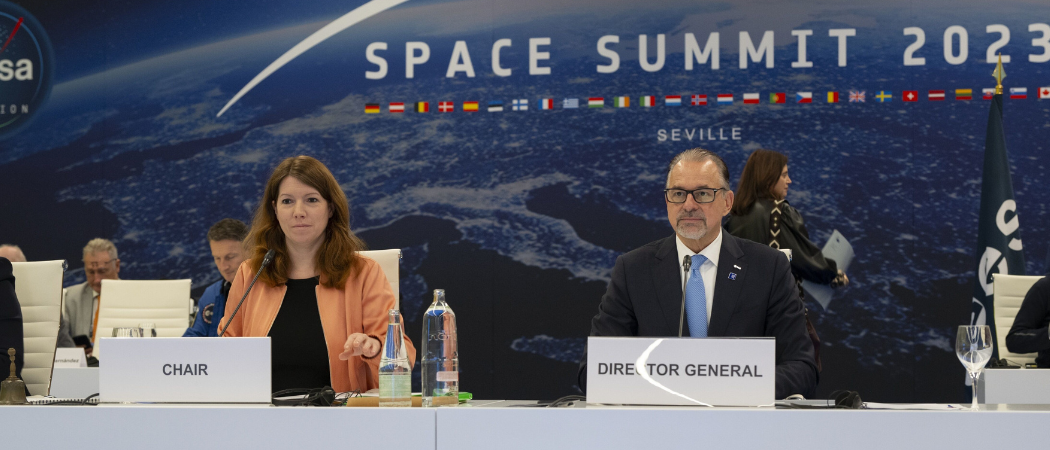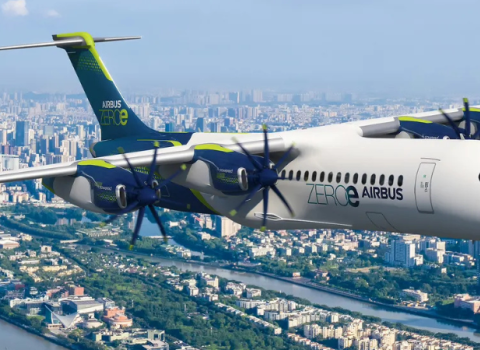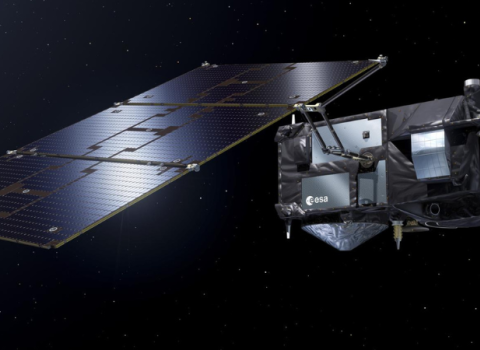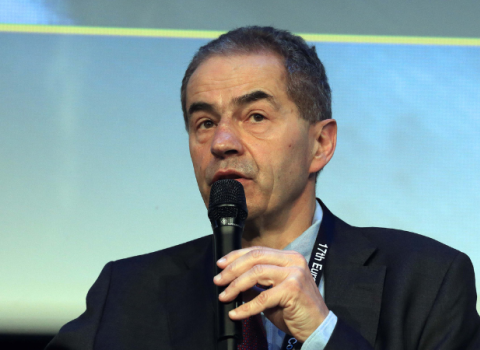With Europe’s launchers in crisis, a ‘paradigm shift’ in its relationship with industry will see the agency copy NASA in adopting a new procurement model in which it no longer owns and operates its own space vehicles

European Space Agency (ESA) director general Josef Aschbacher (Right) sitting alongside Anna Christmann, Germany's aerospace coordinator of the federal government who served as chair of the ESA Council during the Space Summit in Seville . Photo: European Space Agency / Flickr
Europe has learned its lesson, said European Space Agency (ESA) director general Josef Aschbacher as he announced the “historic” decision to embrace a competition-based model for the procurement of future launchers and cargo vehicles at the Space Summit in Seville last week.
As a first step, member states are backing plans for a competition to develop a vehicle to transport cargo to the International Space Station (ISS) and back by 2028.
ESA has begun assembling a small team to meet this timeframe. “It requires a different way of working. We will be much more flexible, adaptive, and dynamic to interact with industry,” Aschbacher said.
The change in approach comes as the launch failure of ESA’s medium-lift Vega-C rocket in December 2022 and delays to the new Ariane 6 heavy-lift rocket have left the continent with no sovereign access to space.
€75 million for the initial phase of the ISS cargo vehicle will come from ESA’s existing budget. This is likely to fund two or three companies to work on the project up to 2025.
Funding for the second phase will be decided at the ministerial meeting in 2025, but will need to be in the hundreds of millions, said Daniel Neuenschwander ESA’s director of human and robotic exploration.
“Today’s change in pace in space requires that we adapt how institutions procure activities from industry,” he told Science|Business. Rather than owning and operating rockets and space vehicles, ESA will act as an anchor customer, providing seed funding, awarding fixed price contracts and making milestone payments to private sector companies. “It’s a small step, but a big vision,” Neuenschwander said.
While the budget for the initial phase is modest, the strategic shift is seen as a way to leverage private investment in the space sector, helping companies to attract investors, and to make Europe more competitive without all the costs falling on taxpayers. European space start-ups often struggle to raise funds, and have been calling for help de-risking their businesses.
Neuenschwander said industry will be responsible for shaping innovation. “We formulate requirements and industry has to take on board the design and make the choices of technologies.”
ESA’s role in the execution of the programme will be to measure technical progress and assess the financial viability of contractors. “Once we’ve established that, there will not be a lot of interference or reviews as we have done in the past,” said Neuenschwander.
The ISS service vehicle could evolve into a crew vehicle and eventually serve other destinations, potentially even bringing samples back from the moon. That will be up to ESA member states, but companies will be asked at the initial phase to show how they could upgrade the vehicle.
The plans are not yet at the level of the ambitions set by Aschbacher, who recently said he wants to see European astronauts on European rockets, but the ESA chief hopes this is just the beginning.
SpaceX also began by delivering cargo to the ISS before winning NASA contracts to transport astronauts. “If you look across the Atlantic, the development is very similar to what we have in mind,” Aschbacher said
ESA also announced it will launch a competition for industry to provide a launch service, with no weight class limitation, to prevent future launcher crises like the one Europe is currently experiencing.
“In Europe we are at the brink of a paradigm shift in launchers and space transportation,” Aschbacher said.
The competition model, pioneered by NASA, has spurred space activity, with 180 rockets successfully launched into orbit worldwide in 2022. That is more than in 2021, according to data analysed by Jonathan McDowell, an astronomer at the Harvard–Smithsonian Center for Astrophysics. The increase was mainly due to the US, where SpaceX’s Falcon 9 rocket had 60 successful launches last year.
However, critics warn the unfettered deployment of commercial space missions, largely driven by US investors, is leading to an alarming increase in the quantity of space junk. In a report last year, the World Economic Forum called for a new space governance system to rein in the potential harmful effects of commercial space missions.
The future of Ariane 6 and Vega-C
In the meantime, the Vega-C launch system is due to restore Europe’s sovereign access to space from next year, following the nozzle flaw that led to the loss of the launcher in December 2022. A 2024 date for the inaugural test flight of Ariane 6 could be announced after the next major ground test at the end of this month.
The inaugural test flight is one of 15 launches that had previously been funded for Ariane 6, but Aschbacher announced that ESA’s 22 member states have now agreed to fund launches 16 to 42, providing certainty to industry, which can start to order parts.
“We have a stable future for launchers in Europe, of medium and large size. This is a big relief, because a few days ago we did not have this situation,” Aschbacher said.
The deal will involve funding of up to €340 million per year for Ariane 6 from 2026, and €21 million for Vega-C for flights 26 - 42.
The Space summit was also a chance for ESA to make progress on its commitment to sustainability, with ministers inviting public organisations and commercial space companies to register their intention to sign up to a voluntary Zero Debris Charter.
ESA also announced a new partnership with the EU’s director general for climate action to use data from earth observation satellites in addressing climate change.





 A unique international forum for public research organisations and companies to connect their external engagement with strategic interests around their R&D system.
A unique international forum for public research organisations and companies to connect their external engagement with strategic interests around their R&D system.